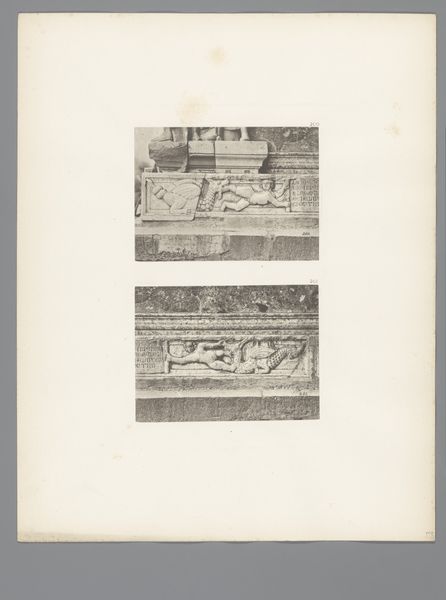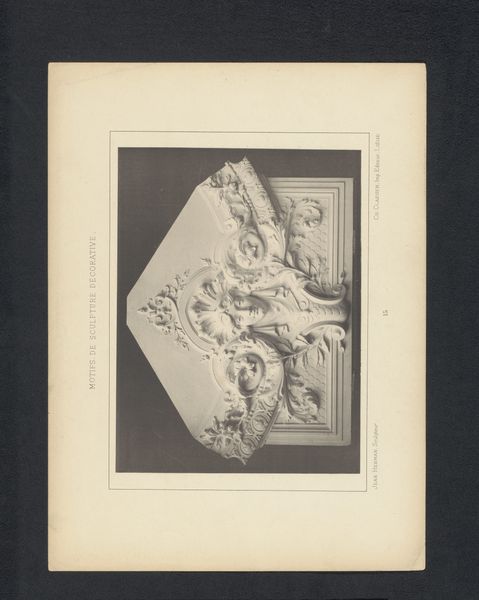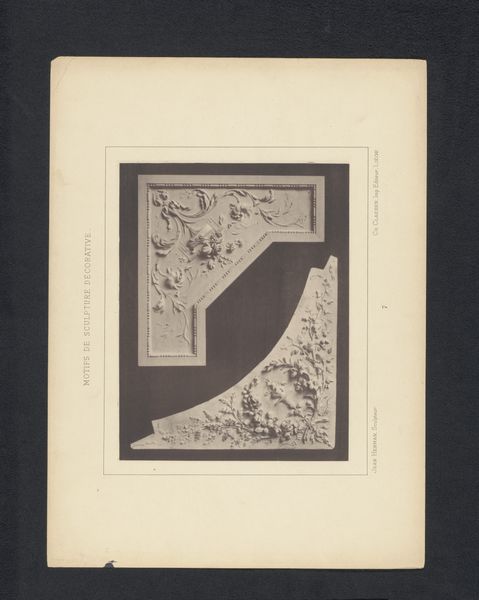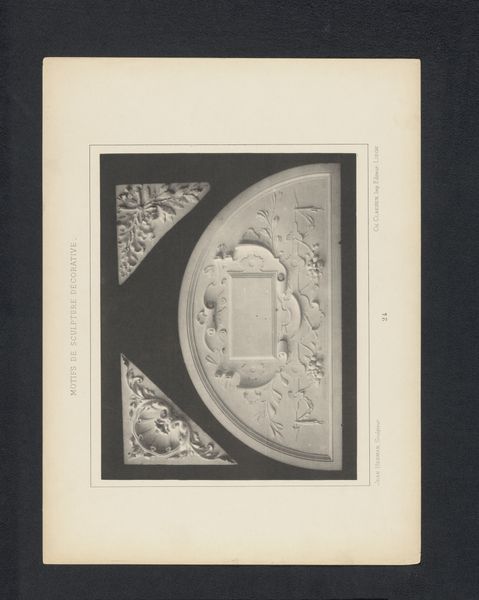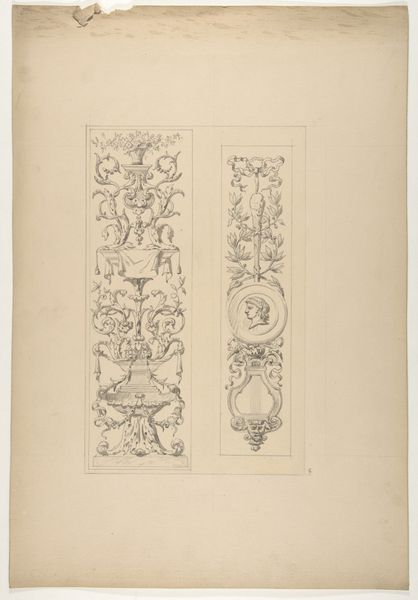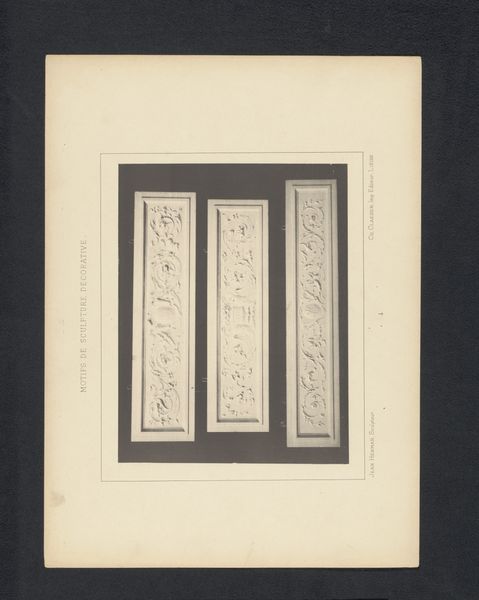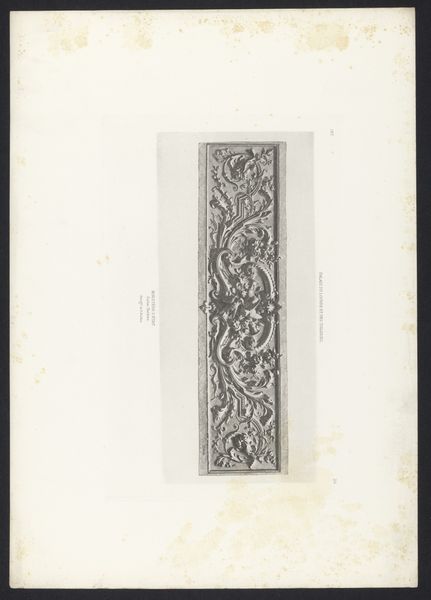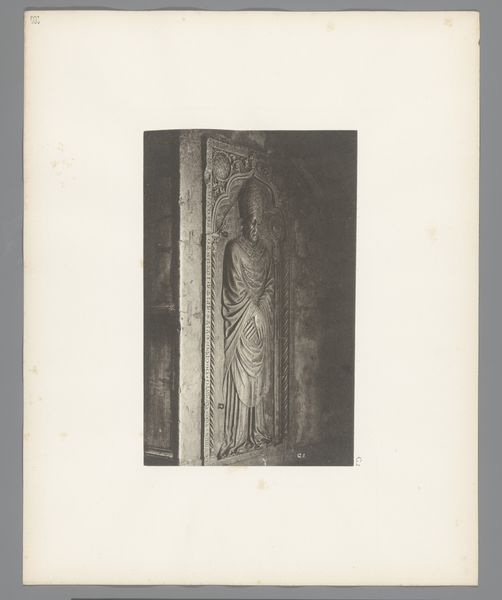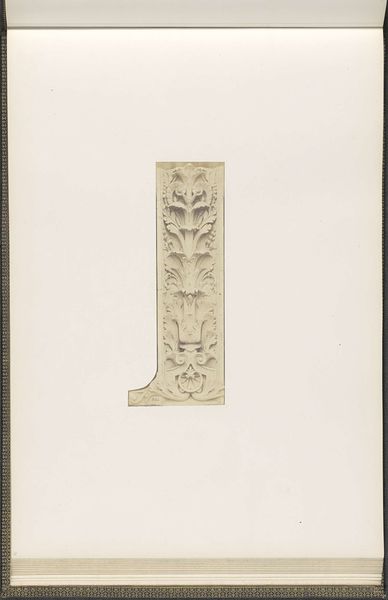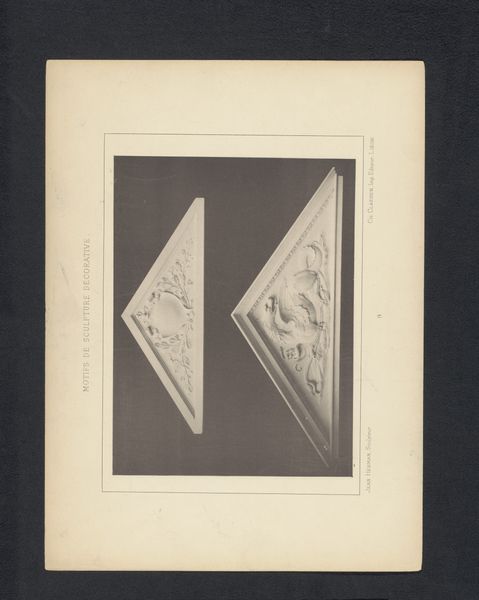
Ornamenten van de trap van het Ministerie van Buitenlandse Zaken in het Palais du Louvre te Parijs before 1870
0:00
0:00
edouardbaldus
Rijksmuseum
Dimensions: height 218 mm, width 201 mm
Copyright: Rijks Museum: Open Domain
Curator: Edouard Baldus captured this photographic print sometime before 1870. Titled "Ornamenten van de trap van het Ministerie van Buitenlandse Zaken in het Palais du Louvre te Parijs," it offers a glimpse into the neoclassical aesthetics of the time, currently held at the Rijksmuseum. Editor: Stark! The composition—the dark backdrop isolating these architectural fragments—it throws the intricate carving into sharp relief. There's a tension between the solidity of the stone and the almost ethereal quality of the light. Curator: Absolutely. Consider the Palais du Louvre— a space of immense political and cultural weight in 19th-century France. The staircase ornaments Baldus photographed represent the French state's desire to project power through classical forms. What’s really interesting here is how photography is being deployed as a means to catalogue, but also disseminate, symbols of power. Editor: But those forms, they speak for themselves! Look at the rhythmic repetition of the floral motifs on the vertical fragment, echoed and complicated by the griffin motif, so carefully sculpted to convey both elegance and ferocity. The semiotic interplay here, it is compelling. We have, essentially, a study in contrasts: the organic and the architectural, the real and the mythological. Curator: And in the context of the Second Empire, this carefully constructed image of French authority carried significant weight. The opulence and the grandeur weren't merely aesthetic choices; they were statements about France's place on the world stage. Remember the rise of industrialism, shifting class structures, the legacies of colonialism? This image exists within that web of socio-political realities. Editor: Perhaps. But regardless of its broader context, this image allows us to see Baldus’s work on visual texture, line, and the geometry—which offers an opportunity to assess Baldus’s masterful arrangement of forms, too. Curator: Agreed, the forms are masterfully arranged. What's truly fascinating here is to observe these relics, fragments, of a particular historical moment where art, politics, and national identity converged so intensely. Editor: Indeed. A study in form that tells of both its aesthetic and ideological intents.
Comments
No comments
Be the first to comment and join the conversation on the ultimate creative platform.

